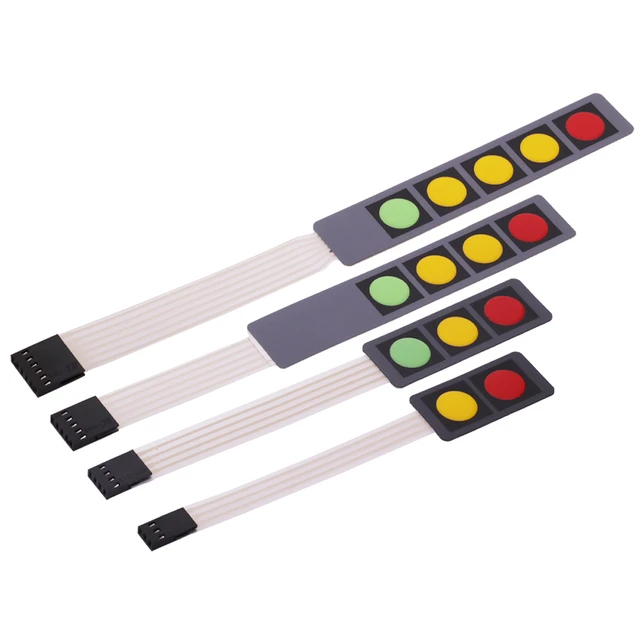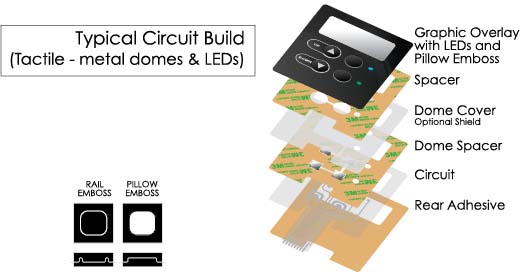Understanding Membrane Changes: The Key to Trustworthy and long lasting Controls

What Are Membrane Layer Switches?
Membrane switches are a sophisticated service in the world of user interface modern technology, combining performance and style perfectly. These devices offer as an interface between individuals and electronic systems, incorporating several components right into a portable format. Normally constructed from versatile, slim layers of products, membrane buttons are developed to respond to touch, enabling users to interact with equipment and electronic tools effectively.
The key aspects of a membrane switch consist of a printed circuit layer, visuals overlay, and a spacer layer that prevents unplanned activation. The visuals overlay can be customized to reflect brand name identity or user choices, enhancing visual appeals while making certain functionality. Membrane layer buttons are commonly made use of in different applications, including clinical devices, consumer electronic devices, and industrial devices, owing to their durability and resistance to environmental elements such as moisture and dust.
Among the vital benefits of membrane layer switches is their ability to withstand damage, making them ideal for high-traffic settings. Furthermore, they are light-weight and call for very little room, allowing for ingenious designs in product growth. Generally, membrane changes represent a effective and useful choice for modern digital user interfaces, marrying technology with user-centric style principles.
How Membrane Changes Job
The operation of membrane layer switches hinges on a simple yet effective mechanism that translates individual input right into digital signals. When a customer presses the button, the top layer warps, enabling a conductive component in the circuit layer to make contact with an equivalent conductive pad on the underside of the visuals overlay.
The style of membrane switches can differ, however they typically include domes or tactile aspects to supply comments to the customer, enhancing the total experience - membrane switch. The products used in membrane buttons, such as polyester or polycarbonate, add to their sturdiness and resistance to environmental elements, including moisture and dust. Furthermore, the published circuits are normally enveloped, which secures them from wear and tear over time.
Advantages of Membrane Switches

In addition, membrane switches are known for their longevity. Built from robust materials, they are resistant to dust, dampness, and physical wear, which significantly expands their lifespan contrasted to typical mechanical switches. This toughness makes them particularly ideal for high-traffic settings and applications needing longevity.
Another considerable advantage is the ease see this here of cleansing and maintenance. The smooth surface of membrane layer changes decreases dust buildup and is commonly unsusceptible spills, making them ideal for setups that require regular sanitization.
In addition, membrane layer switches provide a streamlined profile, causing a thinner design that can be incorporated right into numerous tools without including mass. This feature not only enhances the visual charm but likewise contributes to a much more ergonomic item design.
Applications of Membrane Switches
Functional and straightforward, membrane layer switches locate applications throughout a vast array of industries, including clinical tools, consumer electronics, and commercial equipment. In the clinical field, these buttons are important to devices such as diagnostic devices, individual monitoring systems, and infusion pumps, where dependability and simplicity of cleansing are essential. Their ability to stand up to rough settings and keep capability makes them ideal for such applications.

In customer electronic devices, membrane switches are made use of in items like microwaves, cleaning makers, and remotes - membrane switch. Their streamlined design enables user-friendly interface, enhancing the total individual experience while offering durability and resistance to use and tear
Industrial devices likewise gains from membrane switches, particularly in control panels for equipment and automation systems. These switches provide defense against dirt and moisture, making certain regular try this web-site performance in difficult settings. In addition, their adjustable functions enable suppliers to customize them to specific operational requirements, improving efficiency and performance.
Selecting the Right Membrane Layer Change
When choosing a membrane button, it is important to consider various aspects that influence efficiency and suitability for particular applications. The main factors to consider consist of ecological problems, responsive comments, toughness, and style specifications.
First, examine the operating environment; switches subjected to wetness, chemicals, or severe temperatures need specific products to make sure long life and performance. Next, assess the requirement for responsive comments. Depending on customer communication, some applications may gain from a tactile action to verify activation, while others might like a non-tactile layout for visual reasons.
Resilience is an additional important element; membrane layer buttons should be created to stand up to constant usage, effects, and abrasion. Make certain the selected button can withstand the expected lifecycle, especially in high-usage scenarios.

Final Thought
In conclusion, membrane layer switches offer as vital parts in the style of trustworthy and sturdy control systems across numerous sectors. The flexibility of membrane switches enables for customized options that fulfill certain functional requirements, strengthening their significance in modern innovation.
Membrane switches stand for a critical element of modern-day interface style, mixing capability with strength in various applications.Membrane buttons are an innovative solution in the realm of user interface modern technology, incorporating capability and design seamlessly. Generally constructed from flexible, thin layers of materials, membrane layer buttons are created to respond to touch, allowing users to engage with machinery and digital devices properly.
The style of membrane buttons can differ, yet they commonly include domes or tactile aspects to give responses to the individual, enhancing the general experience.In pop over here verdict, membrane changes serve as necessary elements in the layout of durable and trustworthy control systems across numerous markets.
Comments on “Innovative Membrane Switch Solutions for Customized Control Panels”